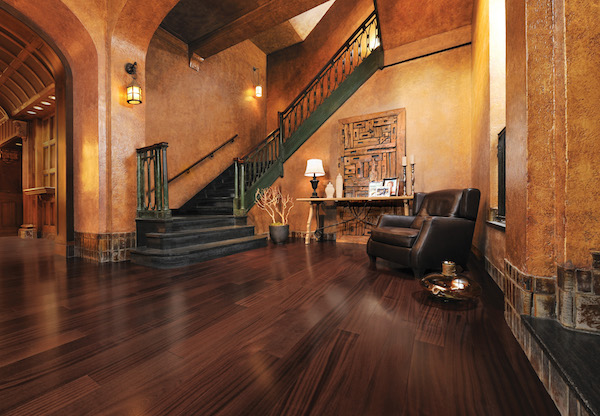
It’s easy to tell when your hardwood floors need some attention. But deciding what to do next isn’t as simple. Here’s a quick guide to help you decide between a quick refinish or repair of the wood floor versus a total replacement.
Define the problem.
Before you jump into a project, diagnose your flooring’s problems. Pinpointing your issues will help you find the perfect solution, while keeping you from going over budget or making expensive mistakes.
Refinish.
Address splotches, scratches or stains with a refinish. Refinishes are cheaper than a replacement and will give your floor a brand new look. Updating your flooring with a new finish is extensive, dirty and invasive work. Be sure to set aside plenty of time to complete the job. Before you start your project, it’s important to remove all of your furniture from the work area. Also, after your floors are finished, allow your home a few days to air out — especially if you have pets or children.
Recommended for: Scratches, stains, burns, chips, dull finishes
Pros: Affordable, improved aesthetics, DIY-able
Cons: Labor intensive, invasive
Replace.
If your floors are too thin to refinish, or if they’re severely warped or damaged, consider a replacement. A hardwood replacement will address any floor-related issues and give your home’s interior a fresh start. Flooring replacements are quicker than refinishes, but they come with higher cost.
Don’t feel the need for a total replacement if your damage is limited to one area. A well-trained pro can install a flooring patch and match it to your older hardwood. Flooring patches will limit the amount of money and time you spend on your replacement.
Recommended for: Severe warping, termite damage, shifting foundations, subfloor issues
Pros: Long lasting investment, improved aesthetics
Cons: Expensive
 Concrete Flooring – Solid as a Rock
Concrete Flooring – Solid as a Rock  Cleaning Hardwood Floors
Cleaning Hardwood Floors  Flooring Ideas for Your Home Gym
Flooring Ideas for Your Home Gym  How To Install or Lay Laminate Flooring
How To Install or Lay Laminate Flooring  Floor Restoration: Why Replace When You Can Repair
Floor Restoration: Why Replace When You Can Repair 

Are You Familiar With This Topic? Share Your Experience.